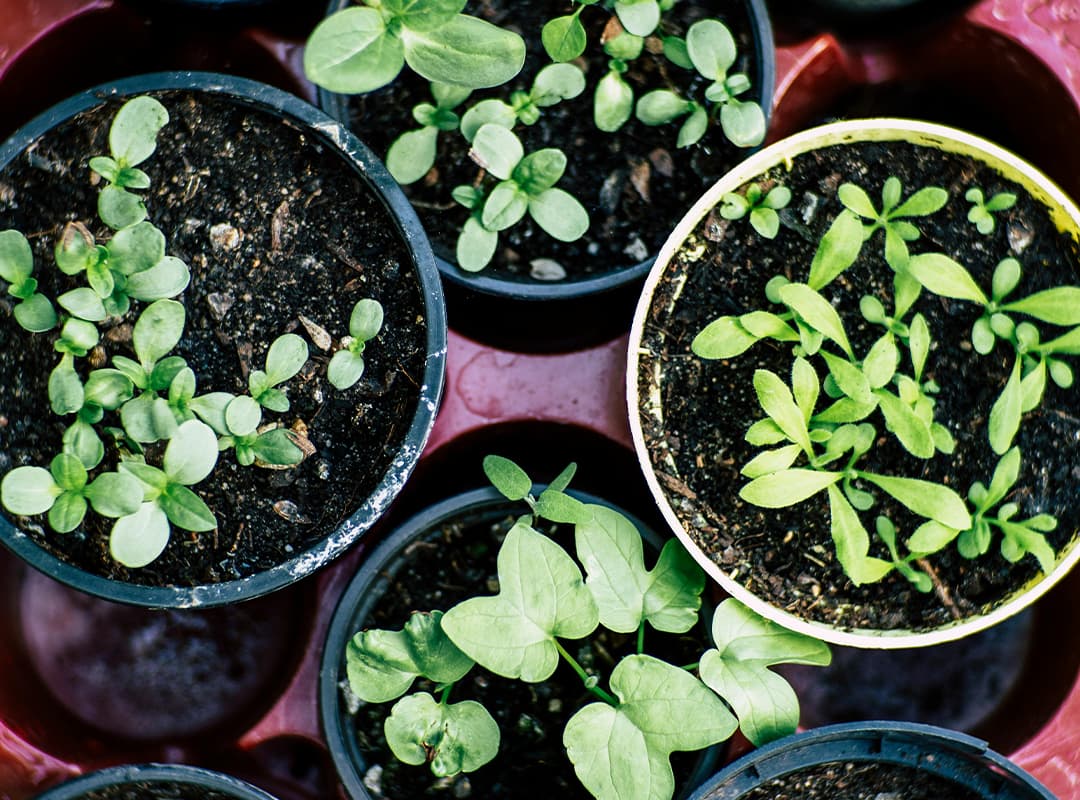
Gardeners of any level can grow herbs indoors around the clock. Under the right conditions, they can be very low maintenance. Learn the basics here to start growing your own garden!
Know what to grow
The best herbs for growing indoors? Most of them are suitable for growing in the garden. A large selection of packets with seeds and seedlings.
Here are some examples of what you can choose:
- Basil;
- Catnip;
- Green onion;
- Lemon balm;
- Parsley;
- Rosemary;
- the sage;
- Mint;
- Thyme.
Give your herbs plenty of sun
Your herbs need at least 6 hours of light a day, and preferably 8. As a rule, the more they get, the better! Whether they get enough light even affects their taste.
Try placing your indoor garden with herbs in a solarium or next to a sunny windowsill facing the south side. Windows facing south have the brightest light and the most sunny hours in winter. Windows facing east and west receive bright sunlight in the morning and afternoon.
Do you not have a sunny windowsill or solarium? A grow light can also help. Place the plants within a foot of the bulbs or follow the instructions. Go to a garden center or online store to buy a small lighting unit if you think you might need it.
Water wisely
When growing herbs indoors, the soil should be moist, but not wet. Let the soil dry a little before watering the indoor garden with herbs. It may be slightly moist, but it should not be wet. It is best to water rarely and slowly. Before watering, test the soil by touching it with your finger. If you feel that the soil is dry about 2 inches below the soil surface, it is time to water.
Although the top of the soil is dry, there is probably enough moisture at the bottom of the pot, as the soil dries from top to bottom. The goal is to teach the roots to penetrate deep in search of water, encouraging a strong and healthy root system.
Do not forget to water slowly. If you water too quickly, the soil may not have time to absorb the water before it drains from the container. Water regularly, preferably two to three times a week, depending on the level of humidity in your home.
Provide a comfortable temperature
Keep the room temperature between 18°С, ideally between 20°С. Lowering the temperature to 16°C can slow down growth if that’s what you need. Some plants require a rest period, and wintering ones can be stored in a cooler place.
Drafts in the windows in your home? It might be too cold. Try adding insulation to protect your indoor herb garden. It can be as simple as placing a towel between the window and the screen.
If it is not basil, most herbs love heat and feel good at a temperature of 22-25°C.
Be aware of humidity levels
When it comes to humidity, consider planting herbs in separate pots or placing several plants of the same plant in larger pots. Each of them may have different preferences regarding humidity.
It is possible to create a microclimate in the house so that the herbs receive the moisture they need. For example, place them in rooms such as the kitchen or bathroom, where humidity is high, if you cook or take a shower. Try using a humidifier or an aerosol from a spray bottle! You can also raise pots over saucers lined with several stones and a small amount of water. When water evaporates, it creates a small amount of humidity.
Help your herbs breathe
Good air circulation is important. Boredom can contribute to the spread of diseases and pests from the plant to the plant. Follow the “don’t touch, don’t feel” rule with your herbs. The pots should be placed at a sufficient distance from each other so that they have room for breathing and they do not touch each other. This reduces the likelihood of such problems as powdery mildew and other fungi.
Does your house not have good air circulation? A small, slightly blowing fan will help increase air circulation. This also helps to improve the growth and strength of the stems, especially when preparing to move them to the street.
Change the herbs
Rotating easily is a good idea, and it helps to mix the exposure of the light, as well as increase the exposure of air and circulation. An almost weekly rotation can ensure their happy and uniform growth. Even the rotation of individual plants can make a big difference, opening different sides to the world and helping to maintain uniform growth throughout the pot. This prevents grasses from stretching towards the light or the sun.